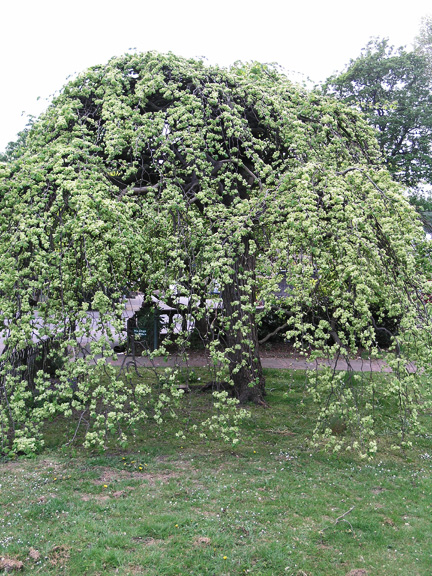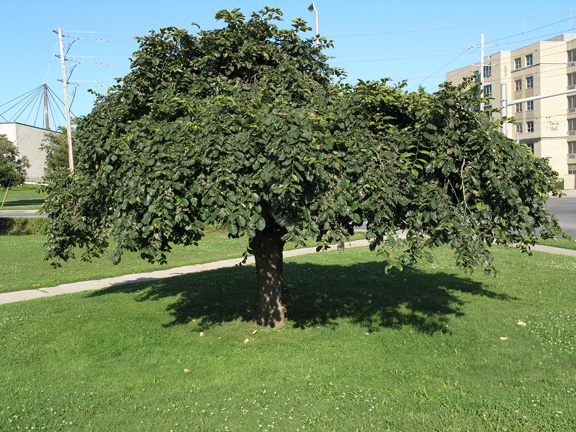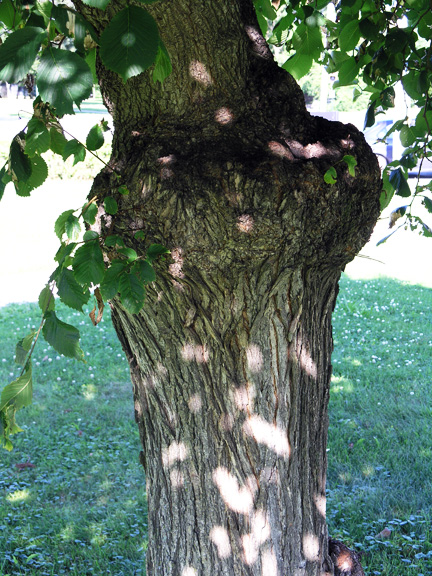
Woody > Ulmus > Ulmus glabra > Ulmus glabra 'Camperdownii'
Ulmus glabra
'Camperdownii'
Camperdown Elm
Origin: Discovered at Camperdown Park in Dundee, Scotland, in 1850, as a seedling found creeping along the ground and was grafted onto Ulmus glabra. It is also synonymous with Ulmus x vegeta 'Camperdownii'.
Mike's
Opinion


"
This tree is spectacular in summer with its dense foliage, and short stature. It is a perfect specimen for parks and larger landscapes due to its wide spreading branches which can droop to the ground. ‘Camperdownii’ is usually grafted to Ulmus americana in North America and Ulmus minor in Europe and thus it is susceptible to Dutch Elm disease caused by Elm Bark Beetles. It is sometimes confused with Ulmus glabra 'Pendula' as they are both weeping trees with similar albeit confusing forms. However, ‘Camperdownii’ produces a dome shaped crown, while ‘Pendula’ produces a stiff, flat crown.
Michael Pascoe, NDP., ODH., CLT., MSc. (Plant Conservation)
"
| Family |
| Ulmaceae |
| Genus |
| Ulmus |
| Species |
| glabra |
| Cultivar |
| 'Camperdownii' |
| Category |
| Woody |
| Type |
| Tree (deciduous) |
| Pronunciation |
| USDA Hardiness Zone |
| 5-7 |
| Canadian Hardiness Zone |
| 4 |
| Temperature (°C) |
| -20 |
| Temperature (°F) |
| -28 |
| Height |
| 4-7 m |
| Spread |
| 4-7 m |
Photographs
Description and Growing Information
Flowering Period
| General Description |
| Ulmus glabra ‘Camperdownii’ is a small to medium sized, weeping tree, which is produced by grafting. It is known for its large, dark green leaves and weeping branches that without pruning will reach the ground. |
| Landscape |
| Camperdown Elm is a specimen tree, and is typically used as a focal point in parks and larger landscapes because of its unique form. It tolerates drought and wind, and requires average moisture conditions. |
| Cultivation |
| Plant in full sun in moist, sandy, alkaline soils |
| Shape |
| A weeping broad spreading, low canopied tree. |
| Growth |
| Medium |
| ID Characteristic |
| This tree is characterized by its large obovate leaves, and weeping structure. It is also known for its twisting, crowded branching, and how it intolerant to being trained: the branch structure seems to have a mind of its own. |
| Pests |
| Camperdown Elm can become infected with Dutch Elm disease, wetwood and Phloem necrosis which affects most Elms. Dutch Elm disease is spread by the Elm Bark Beetle. Some say that the Camperdown Elm is resistant to the disease, but it is only because the beetle is unable to locate them because of their small size an usually solitary locations. |
| Habitat |
| Horticultural origin. |
| Bark/Stem Description |
| Smooth bark at the base of the scion with cross checked bark on the understock. |
| Flower/Leaf Bud Description |
| 7 mm buds, alternate, brown at base and darker brown at tip, covered in small stiff hairs. |
| Leaf Description |
| Leaves are 8-16 cm long, 5-10 cm wide; obovate; double-serrate; dark green in summer and yellow in autumn with a rough upper side; leaves grow bunched together and are pillose on both sides. |
| Flower Description |
| Insignificant green flowers, to 3 cm with a single petal, emerge in early spring, and grow in compact groups. |
| Fruit Description |
| Produces a small winged nutlet around 2 cm long, light green fading to beige when ripe but which does not germinate. |
| Colour Description |
| In young trees the bark is silver-gray and smooth but as it matures it turns into a darker grey with black grooves. Leaves are dark green on the top but with a silvery-green underside. When the tree flowers the entire plant appears a light green due to the number of blooms. |
| Texture Description |
| It is a coarse textured plant. |
| Notable Specimens |
| The Christchurch Botanical Garden, Christchurch, New Zealand. Prospect Park, Brooklyn, New York, United States of America. |
| Propagation |
| Propagated from stem cuttings, or bud grafted onto the rootstock of another immature Elm at a height of 1.5 m. Camperdownii produces seed however they are not usually viable and if so will not be true to form. |
References
Hillier, Harold G. Hillier's Manuel of Trees and Shrubs. South Brunswick: A.S. Barnes, 1973. Print.
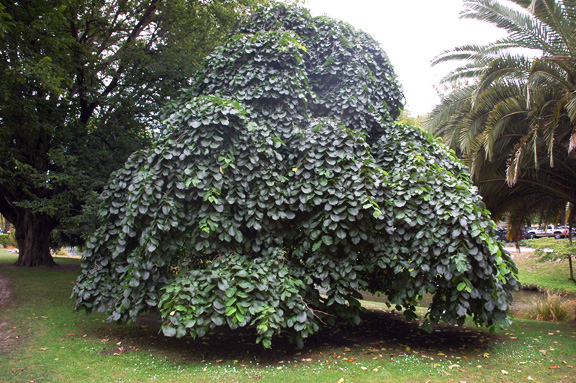
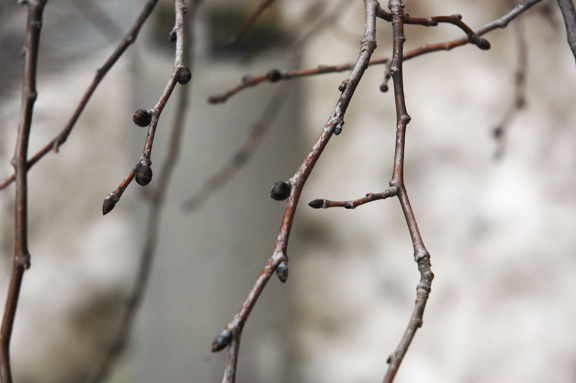
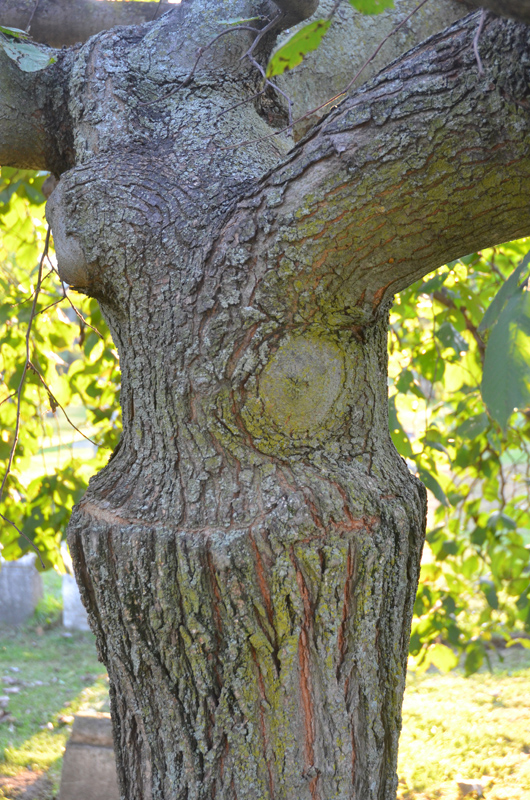
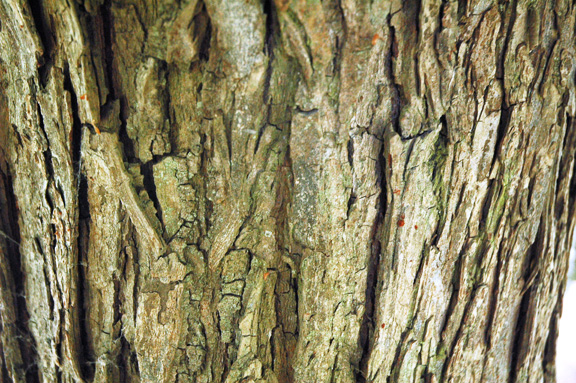
.jpg)
